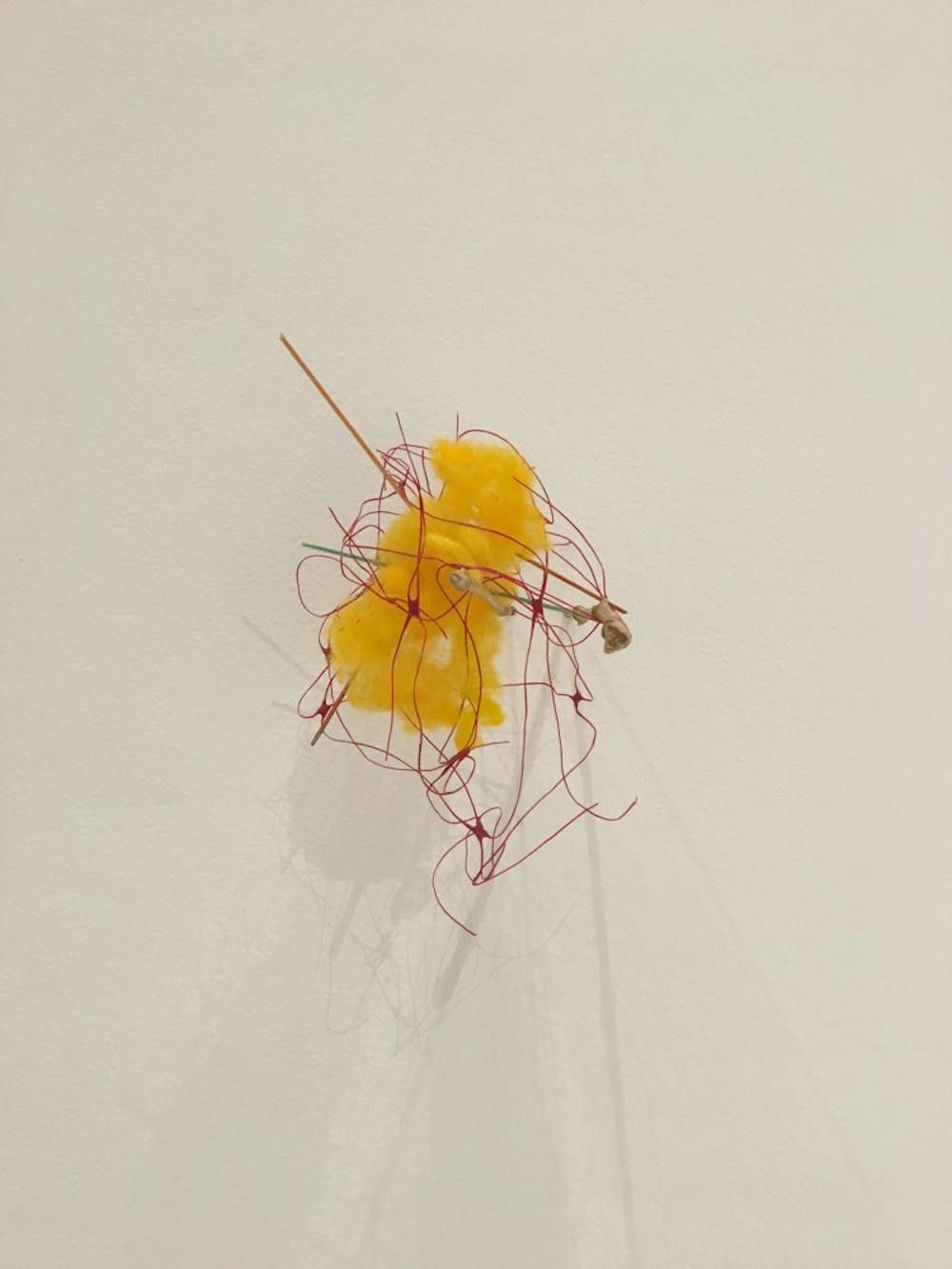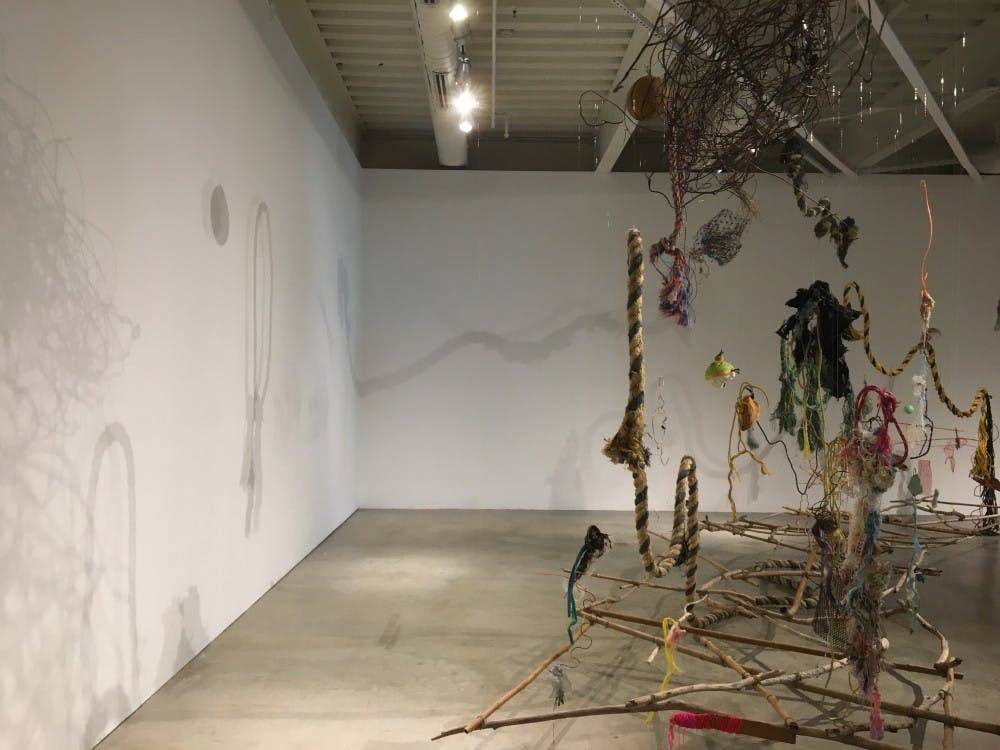Stones and thread–covered fishbones hang from the ceiling, suspended by clear, barely–visible twine. They sway, their movement made apparent from the large shadows cast on white gallery walls. Spanish and English poetry wraps around through the walls and work.
Held at Philadelphia’s Institute of Contemporary Art, Cecilia Vicuña: About to Happen “represents the first major U.S. solo exhibition of the influential Chilean–born artist and poet.” Through utilizing found objects both manmade and natural, and working fluently across mediums of sculpture, drawing, video, text, and site–specific installation, Vicuña “stages a conversation about discarded and displaced materials, people, and landscapes in a time of global climate change.” By working across disciplines, Vicuña crafts an environment that lives and breathes despite being made with inanimate objects.
Upon entering the exhibition, the viewer first finds a large sculpture composed of objects found by Vicuña in the Mississippi River, which is described by signs throughout exhibit as “a poetic response to the rising waters of our Gulf Coast.” The piece, entitled Balsa Snake Raft to Escape the Flood (2017) includes debris, bamboo, willows, rope, net, Styrofoam, feathers, and a deflated basketball. Objects are suspended from the ceiling and sway gently, creating illusions of lively activity from otherwise inanimate objects. Through focusing on discarded objects as sources of art, Vicuña “suggests that the wreckage and refuse of consumer culture may serve not only as the reason for an impending cataclysmic disaster, but also as a useful material to be used in its wake.”
Though shown on a relatively small screen in comparison to Balsa Snake Raft, according to installation signs, Vicuña’s “seven short films on loop” (2012–2015) equally engage and absorb the viewer. Here again, Vicuña imbues inanimate objects with movement and emotion. In Umbilico (2012), Vicuña unfurls a long and thick piece of fuzzy, red fiber (while everything else in the film is black and white) over the side of an industrial building, knotted together like a still–connected umbilical cord. While the artist's medium is just fabric, the red fiber snaking down the side of the building appears anatomical and alive. The viewer watches as the two pieces of fiber separate from one another in one film before the next begins. The rest of the films include footage of the artist picking seeds and singing, rope filmed in x–ray style footage, and objects in battle with and embracing one another. By anthropomorphising inanimate objects, Vicuña brings the human body and its accompanying motion into her work, making one aware of their own presence or role within the piece.
In her Precarios (1966-2018), Vicuña creates small temporary sculptures from objects found while walking. Originally created with objects found on the beach that were meant to be erased by the ocean, the installation description notes that “she has since incorporated them into her studio practice.” Vicuña began making the sculptures while in exile from Chile in the 1970s, during the dictatorship of General Augusto Pinochet. In response to Pinochet's dictatorship, the Precarios “functioned as a commentary on the way that Pinochet treated people like rubbish; simultaneously, the fragile, beautiful sculptures became charms or amulets for resisting his rule.” Down–trodden, like trash, yet beautiful—Percarios is the epitome of how Vicuña’s work employs duality.

In our contemporary era of global climate change, Vicuña’s work is a public call to action. From the discarded plastic, to wooden skewers perhaps picked up on the streets, to worn rocks pocketed from the roadside, Vicuña pushes viewers to confront the consequences of climate change by crafting art out of found objects—the very things we have thrown aside, deemed of unworthy of keeping. In addition, About to Happen raises audiences' awareness of the body’s relationship to our environment. By calling into question the body's role as an object through anthropomorphising the inanimate, Vicuña sparks necessary conversation regarding how we might not only take note of the world, but also how we might care for the environment and each other.
Cecilia Vicuña: About to Happen is on display from Feb. 1—March 31 at the Institute of Contemporary Art in Philadelphia.

